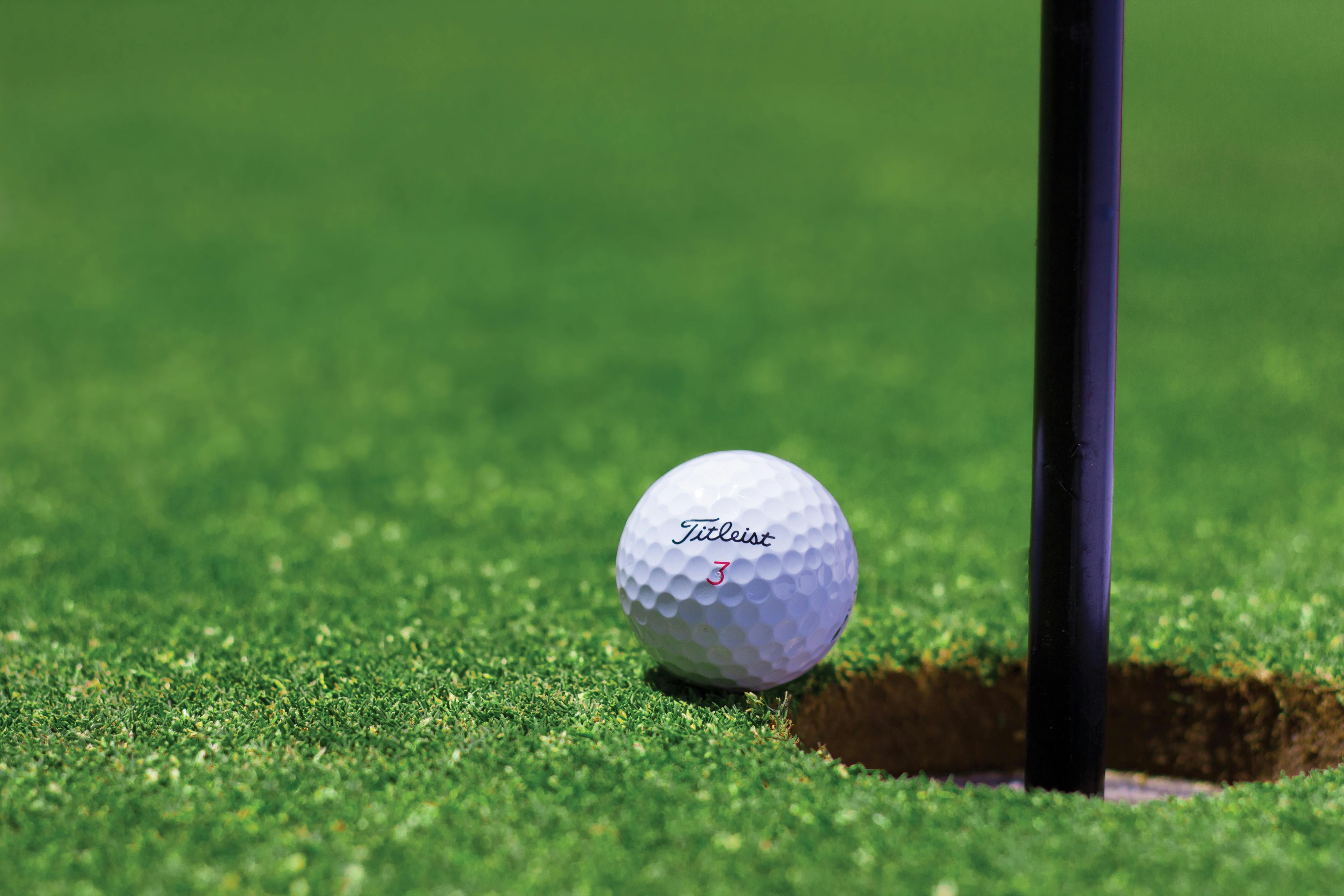Have you ever wondered why you keep topping the golf ball? Topping the golf ball is one of the most common mistakes made by amateur golfers, and can be a difficult habit to break. Yet, if you understand what causes it and practice some drills, you can quickly start hitting more solid shots. In this article, we will explore why do I keep topping the golf ball and how to fix it.To stop topping the golf ball, you need to focus on changing your swing plane. Start by setting up to the ball with your feet slightly wider than shoulder width and your weight set firmly on the inside of your feet. Then, make sure you have a slight tilt in your spine away from the target. This will allow you to swing more from the inside out. As you take your backswing, focus on keeping the clubhead low and close to the ground as long as possible. This will help you maintain a good swing plane and prevent topping the ball. Finally, make sure that you follow through with your arms and don’t try to scoop or lift up too much at impact. Keeping these tips in mind should help you stop topping golf shots.
What Causes Topping The Golf Ball?
Topping the golf ball is a common mistake that can cause a lot of frustration for golfers. It occurs when the clubhead strikes the top of the ball rather than its equator, resulting in poor quality shots that may not even reach the intended target. There are several common causes for topping the golf ball, such as poor posture, incorrect grip, an improper swing path, and incorrect club selection.
Poor Posture
Having poor posture when striking a golf ball can make it difficult to make solid contact with the ball. Poor posture can lead to a shallow swing path which will cause you to hit only on top of the ball instead of through it. To ensure proper posture, it is important to bend at the knees and hips, keep your back straight and maintain your balance throughout your swing.
Incorrect Grip
Having an incorrect grip on your club can also lead to topping the golf ball. An incorrect grip can cause you to hit off-center or at an angle instead of square on top of the ball. It is important to make sure that your hands are positioned slightly lower than normal and that your thumbs are pointing towards each other in order for you to get a good grip on the club and make solid contact with the ball.
Improper Swing Path
An improper swing path can also be responsible for topping the golf ball. A swing path that is too shallow will cause you to hit only on top of the ball instead of through it, resulting in poor quality shots that may not even reach their intended target. To ensure proper swing path, it is important to take a full backswing before bringing down your clubhead in a smooth arc towards impact with an upward strike angle as you approach impact.
Incorrect Club Selection
Finally, incorrect club selection can also lead to topping the golf ball. When using longer clubs like woods or hybrids, players tend to use more loft which increases their chances of hitting only on top of the ball instead of through it. It is important to select appropriately lofted clubs based on shot distance so as not to hit too high up on the equator of the golf ball which will result in poor quality shots and ultimately lead to topping.
1. Not Having the Correct Setup
One of the most common mistakes when topping the golf ball is not having the correct setup. The setup is critical to ensure that you stay down through impact and hit the ball properly. Your feet should be slightly wider than shoulder width apart, with your weight on your left side (for a right-handed golfer). Your arms should be extended in front of you, and your back should be bent slightly forward. This will help ensure that you stay down throughout your swing and make solid contact with the ball.
2. Taking Too Fast of a Backswing
Another mistake when topping the golf ball is taking too fast of a backswing. This causes your club to come up too quickly through impact, resulting in a topped shot. To ensure that you have a smooth and connected swing, focus on making a slow, steady backswing and keeping your arms extended throughout the swing. Keep your head down through impact as well, which will help keep your clubhead low and on-plane as it strikes the ball.
3. Not Hitting Down on The Ball
Topping the golf ball can also occur when you do not hit down on the ball enough. When hitting an iron shot, it is important to focus on hitting down into the ground behind the ball in order to get optimal launch angle and spin rates for maximum distance and accuracy. To do this, make sure to keep your hands ahead of the clubhead at impact and maintain good posture throughout your swing.
4. Trying To Lift The Ball In The Air
Finally, many golfers make the mistake of trying to lift the ball in air with their irons instead of letting gravity do its job naturally. When hitting an iron shot, focus on making solid contact with a descending blow instead of trying to lift or scoop up the ball off of the ground. Doing so will help ensure that you make solid contact with every iron shot and prevent common mishits such as topping or thinning shots.
Adjusting Your Swing For A Clean Contact
It is important to make sure you are making a clean contact with the golf ball during your swing. This will help you hit the ball further and straighter. To do this, it is important to adjust your swing so that you have a consistent contact point with the ball. Here are some tips on how to make sure you have a clean contact with the ball.
First, you should focus on where your clubhead is at impact. Make sure that it is coming into the ball from the correct angle and that it is not too shallow or too deep. The ideal angle will depend on your club type, but generally speaking, you want to be hitting down slightly on the ball for a good clean contact.
Second, check your grip pressure. If you are gripping too tightly, it can cause your club head to come into the ball at an odd angle, resulting in poor contact with the ball. Try to keep a light grip on the club and let your body do most of the work during your swing.
Third, adjust your stance so that it allows for a consistent swing path and weight shift through impact. Your stance should be comfortable and allow for an easy transition of weight from backswing to forward swing so that you can get full power behind each shot.
Finally, practice regularly and focus on making solid contact with each shot. Make sure each shot has a solid thud when it contacts the club face and try not to rush through any part of your swing. With time and dedication, you will be able to make consistent clean contact with every shot.
By following these tips, you can make sure that every time you swing at a golf ball, it results in a clean contact and more accuracy off the tee or fairway. A good golf swing starts with good fundamentals such as proper alignment and grip pressure as well as having an effective weight shift throughout each shot. With practice and dedication, soon enough you will be able to master all aspects of having a great golf swing!
Analyzing Your Stance And Posture
Good posture and stance is essential for proper body alignment. It is important to analyze your stance and posture in order to determine if you are maintaining the correct form. Poor posture can lead to injury, fatigue, and even pain. It is important to take some time to assess your current posture and make adjustments as needed.
When analyzing your stance and posture, start by standing in front of a mirror. Take a few moments to observe how your body is positioned relative to the floor. Pay attention to how your head, shoulders, hips, knees, and feet are aligned. Make sure that your weight is evenly distributed between both feet and that your spine is straight. Your shoulder blades should be pulled back slightly and relaxed away from your ears. The chin should be tucked slightly towards the chest so that the neck is in line with the spine.
Next, take a few moments to assess how you are sitting. When seated, make sure that both feet are flat on the floor with the knees at a 90-degree angle. The lower back should be supported by the back of the chair or by a cushion if necessary. The arms should rest comfortably at either side of the body with elbows bent at 90 degrees or less. The head should remain in line with the spine while looking straight ahead rather than tilting it down towards the desk or keyboard.
Finally, take some time to assess how you move throughout daily activities such as walking or running. Make sure that you are moving efficiently from one place to another without straining any particular part of your body too much or too little. Pay attention to how quickly you move and any changes in balance or direction when transitioning from one activity to another.
By taking some time to analyze your stance and posture on an ongoing basis, you can ensure that you are properly aligned and moving with optimal efficiency throughout all activities throughout daily life!

Practicing Proper Swing Technique
Good golf swing technique is essential for improving your game. It helps you hit the ball with more accuracy and consistency, as well as increasing your overall distance. It is important to practice good swing technique on a regular basis in order to get the most out of your game.
To begin, it is important to understand the basic stance you should take when swinging a golf club. You should stand with your feet shoulder width apart, knees slightly bent, and back straight. The weight should be evenly distributed between both feet, as this will give you a more stable base for your swing. It’s also important to keep your chin up and eyes focused on the ball throughout the entire swing.
When preparing to make a swing, it’s important to keep your arms close to your body, rather than extending them away from you. This will help you maintain control over the club and generate more power behind the shot. You should also maintain a consistent grip pressure throughout the entire swing; too much pressure can cause tension in your arms and wrists, making it harder to maintain control over the club head.
The backswing should start with a turn of the shoulders as opposed to just lifting up with the arms; this will ensure that all of the muscles involved in making a shot are working together properly. As you reach the top of your backswing, make sure that both elbows remain close together – if they drift apart during this stage of the swing, it can throw off your balance and rhythm during follow-through.
Finally, when transitioning from backswing into downswing it is important not to rush or jerk through this transition – instead focus on making a smooth and controlled movement that will help maximize clubhead speed at impact. Make sure that you transfer weight from one foot to another as part of this transition; this will ensure that all of your energy is being used efficiently throughout each stage of the swing motion.
Overall, practicing proper golf swing technique is essential for those looking to improve their game and enjoy greater success on the course. By following these tips and focusing on building good habits during each stage of the golf swing process, you’ll be able to take strokes off your score card in no time!
Identifying Your Optimal Impact Position
Everyone wants to have a job where they can make a positive impact. But how do you determine your ideal impact position? It can be difficult to know where to start, but here are some tips that can help you identify the job that will best suit your skills and interests.
First, consider what kind of impact you want to make in your work. Are you looking for a job that has a direct and immediate impact on the lives of people or organizations? Or are you looking for something more abstract, such as helping to shape policy or create new ideas? Knowing what kind of impact you hope to make will help narrow down the types of positions available.
Next, think about what skills and experience you already have that can be used in an impact-focused role. It may be helpful to create a list of your strengths and weaknesses so that you can focus on roles that align with your existing skillset. Additionally, consider any areas where there is room for improvement or additional training needed.
Once you have identified potential positions, research the organizations offering these positions and determine if they align with your values and goals. You should also review their mission statements to get a better understanding of how they prioritize making an impact in their work. Additionally, look into the company’s history and track record when it comes to making an impact in their community or industry.
Finally, take some time to network with those who work in similar roles at other organizations so that you can gain insight into how they achieved success in their roles. This will provide valuable information about potential career paths as well as useful advice from those who have already been successful in this area.
By taking the time to identify your optimal impact position, you will be better equipped to make meaningful contributions to the world around you. With careful research and thoughtful consideration, it is possible to find the perfect job for making an enduring mark on society!
Making Sure You Have The Right Clubs And Shafts
Having the right golf clubs and shafts is essential to playing your best game. Knowing which clubs and shafts to choose can be a daunting task, but it doesn’t have to be. Here are some tips to help you make sure you have the right clubs and shafts for your game.
First, it’s important to choose the right clubs for your skill level. If you are an experienced golfer, you may want to opt for higher-end clubs that will give you more control over your shots. On the other hand, if you are just beginning, going with lower-priced options may be more beneficial as they will allow you to get a feel for the game without breaking the bank. Once you’ve chosen the right type of club, it’s time to pick out the perfect shafts.
The shaft of a golf club is arguably one of its most important components, as it affects how far and accurately you can hit a ball. Different types of shafts have different flexes and weights that affect how they perform – so it’s important to choose a shaft that suits your personal swing speed and style. In general, lighter weight shafts are better suited for beginners or players with slower swing speeds while heavier weight shafts are better suited for experienced players with faster swing speeds.
Finally, when selecting golf clubs and shafts, it’s important to make sure they fit properly. If they don’t fit properly they won’t give you an optimal performance on the course. Most golf shops offer custom fitting services that can help ensure your clubs and shafts are perfectly tailored to your individual needs. With these tips in mind, you’ll be sure to find the perfect golf clubs and shafts for your game!

Conclusion
Topping the golf ball can be caused by several different factors, from a poor setup to an incorrect swing path. It is important to understand the possible causes and take action to fix them. The best way to do this is by working with a golf professional who can help identify the source of the problem and provide guidance on how to correct it. With dedication and practice, golfers should be able to eliminate their topping issues and start seeing improved results on the course.
In conclusion, topping the golf ball is a common issue among golfers of all levels. It is important for players to understand why they may be having this issue and how they can go about fixing it. By understanding the various causes of topping, players will be able to identify which issue is causing their problem and work with a golf professional on how best to correct it. With enough practice, topping will soon become a thing of the past for any golfer!




